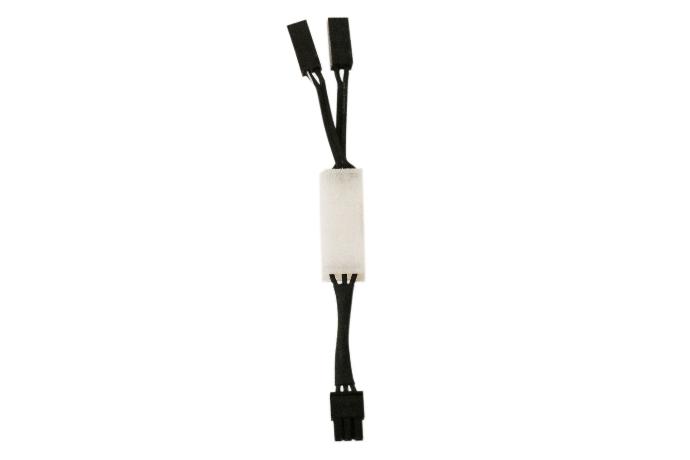Adapter Cable - Input #3 and #4 Doubler
This 3-pin splitter can be used to convert inputs 3 and 4 into two, individually wired 2-pin inputs. Great for situations where you want to use a float switch and water detector together to monitor for water and have another use for inputs 1 and 2 for other sensors and/or detectors.
The PumpAlarm.com 4G cellular transmitter accepts only a factory supplied, small clip-in cable terminal. This cable allows connection of any normally open or closed switch device to the PumpAlarm.com clip-in sensor port, on inputs #3 and #4 which are factory configured to accept our 3-wire rugged dual float switch. The male end of the splitter connects to the device and then has two, female connectors, each accepting a PumpAlarm.com 2-pin sensor input, or the PumpAlarm.com 15' Input Adapter Cable
The PumpAlarm.com 4G cellular device also includes programmable options for 3rd party or service organizations to advertise their company name and phone number with each alarm that is transmitted. For example, if you are a plumbing firm, and installing this product for your customer, you can add your name and phone number to each alarm alert message, so your customer knows to call you during an emergency.
Why do we offer this accessory? We know our device is perfect for many applications including server rooms, alarm systems, etc. so if you have your own sensor (e.g., door switch, motion detector, alarm contact, relay contact), then you can expand the normal number of inputs to monitor 3rd party devices, or to independently use all four of the cellular transmitter inputs.
Our inputs can be customized to fit a range of applications. Through a simple text message, you can add a custom "input name" and adjust normally open/closed for each of our inputs. You may even set the alarm delay (1-999 seconds) to fit your specific application.
